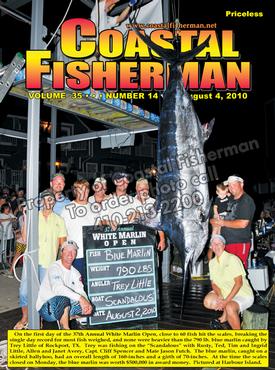


Article by Pat Schrawder
 AIS and ARPA – EXTRA MEASURE OF SECURITY
AIS and ARPA – EXTRA MEASURE OF SECURITY
If you have radar on your vessel, that is your best and the most popular form of anti-collision device. However, there are two other items of electronics that bear looking into, especially if you venture out to the Canyons or travel along the coast from port to port. There are a lot of vessels out there. Many of them are foreign and are not communicating their presence.
These two items are known as AIS (Automatic Identification System) and the Automatic Radar Plotting Aid, ARPA (pronounced “r-pa” and not to be confused with AARP).
Similar in function but quite different in their technology and required equipment, both AIS and ARPA have been developing over the years but have become something that is more accessible to the average boater. Since 911, the Federal Communications Commission has set standards for and has required that certain vessels be equipped with AIS to support Homeland Security. Simply put. AIS is a shipboard broadcast system operating in the VHF maritime band that provides “real time” detailed information between vessels and/or shore based stations allowing you to identify and track certain vessels in the surrounding area providing collision avoidance data. In other words, who’s out there and where are they going? It requires a VHF antenna an AIS device (a "receive only" Class B unit or a "send and receive" Class A unit) and a GPS. The Class “B” unit allows you to receive detailed information about other Class “A” AIS equipped vessels but will not allow other vessels to “see you”. The Class A device will allow you to both “see” other AIS equipped vessels and for AIS equipped vessels to “see you”. Certain vessels are required to be equipped with Class “A” AIS transponders but the system as currently implemented only works for those that are equipped.
When an AIS system is installed on a vessel, several items of data are programmed into the unit to be transmitted via the system. Among those items are: ship’s name, type, call sign, IMO number, length and beam, antenna location, draft, cargo information, destination, and ETA. The incoming information from other vessels will be displayed in rotation on your AIS receiver and on your radar screen if it is interfaced. One way to picture this is to compare it to the screen of an air traffic controller. Every 6 minutes the information is updated and, if the vessel is under way, your AIS system “tracks” its position, course over ground, speed over ground, gyro heading, rate of turn, navigational status, direction of travel and will check for dangerous targets within a safe zone set up by you, sounding an alarm. This system installed in Coast Guard stations aids them in implementing Homeland Security by increasing their awareness of vessels in the water and especially of those entering US ports. The effectiveness of this system is dependent on the increased usage of it by more and more boats. Similar in purpose, the ARPA (Automatic Radar Plotting Aid) functions for target tracking and risk analysis. Originally designed as an “add-on” to your radar, it is now already built into some radar units. It automatically tracks several acquired targets, calculates target bearing and range, speed and course, closest point of approach and time to closest point of approach. Each target is continually assessed and an audible alarm sounds if the target becomes dangerous (will be within a certain distance from your boat within a certain time) or is lost. Initial target acquisition is available only at certain ranges. ARPA should not be confused with the feature included in your radar known as “target tracking” or “target enhancement”. In these cases, target tracking simply puts a trail behind the target showing its direction of travel, but does not calculate true bearing, range, rate of travel, etc. ARPA is much better than a simple radar alarm zone in the information you receive. You can use it on an overnight trip to monitor activity around your boat while you’re sleeping, A dive boat will find this feature valuable for protection of its divers. If a vessel is on a collision course with you and you have to change course, you have time to get your divers out of the water first.
ARPA is similar to AIS in that you get some of the same information but you do not get detailed vessel information such as name, ship design, etc. One advantage of the ARPA is that you can track any vessel within your range. They do not have to have any corresponding equipment on their boat for this to happen. For this reason and the fact that many radar units have ARPA built in, it is the device you will be more likely to use.
If you have radar, have you checked to see if your unit is equipped with ARPA yet? As they have become more popular, more and more manufacturers are including them in their product line so you might want to check them out.
Pat and her husband, Larry are owners of L&L Marine Electronics in West Ocean City, MD.